Spec
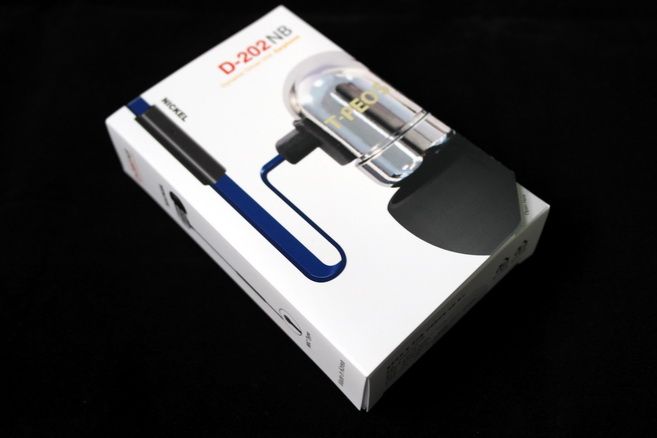
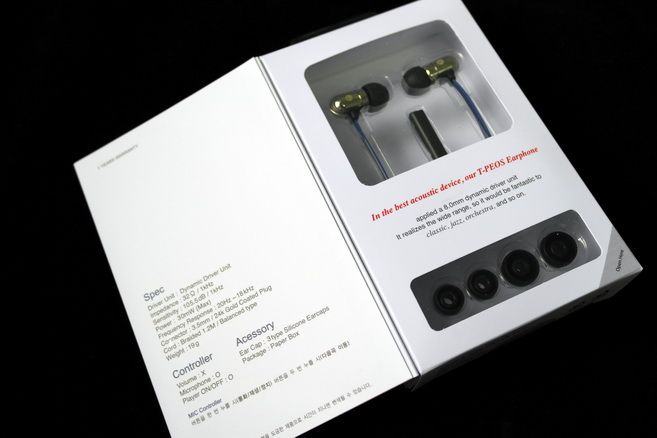
D-200
Driver: 8mm Dynamic
Frequency Response: 20Hz ~ 18kHz
Impedance: 32Ω / 1kHz
Sensitivity: 105.5dB / 1kHz
Max Power: 30mW
Body: Brass, 19mm x 11mm
Cable: Braided / Flatted, 1.2m with 3.5mm gold plated stereo plug
Weight: 19g
Mic supported
MSRP: US$24

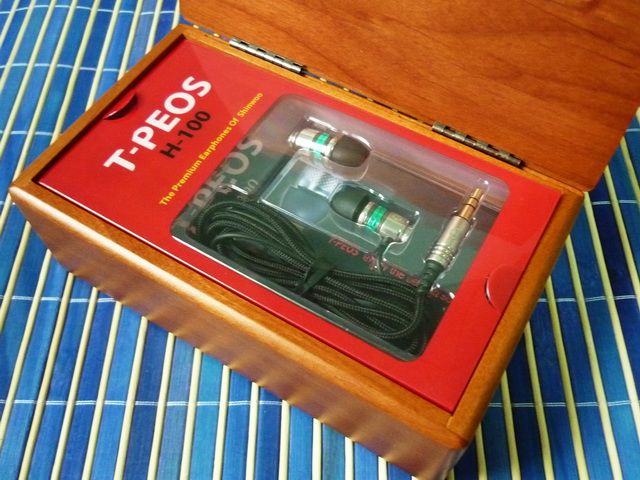
H-100
Driver: Single BA + 8mm Dynamic Hybrid
Frequency Response: 20Hz ~ 20kHz
Impedance: 32Ω / 1kHz
Sensitivity: 102dB / 1kHz
Max Power: 100mW
Body: Grade 303 Stainless Steel
Cable: Braided 1.2m with 3.5mm gold plated stereo plug
Weight: 20g
MSRP: US$152

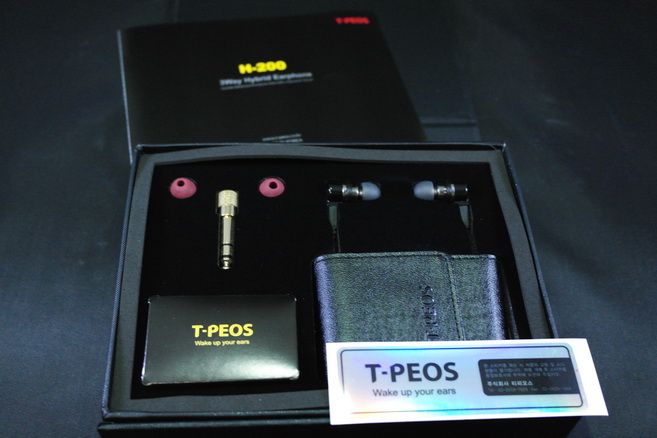
H-200
Driver: Dual BA + 8mm Dynamic Hybrid
Frequency Response: 20Hz ~ 20kHz
Impedance: 22Ω / 1kHz
Sensitivity: 105dB / 1kHz
Max Power: 100mW
Body: Brass + Plastic
Cable: Detachable Braided 1.2m with 3.5mm gold plated stereo plug
Weight: 15g
Mic supported
MSRP: US$256
Packaging, Accessories and Build Quality
D-200 series is in the lower end of T-PEOS line-up, so the packaging is just simple paper box. Accessories are lacking as well, as it comes only with 3 pairs of eartips. The good news is the IEM itself is quite well built – brass body earpieces and flat cable, definitely durable but also a bit more microphonics. It also has a single button mic that is compatible with iDevice and Android.
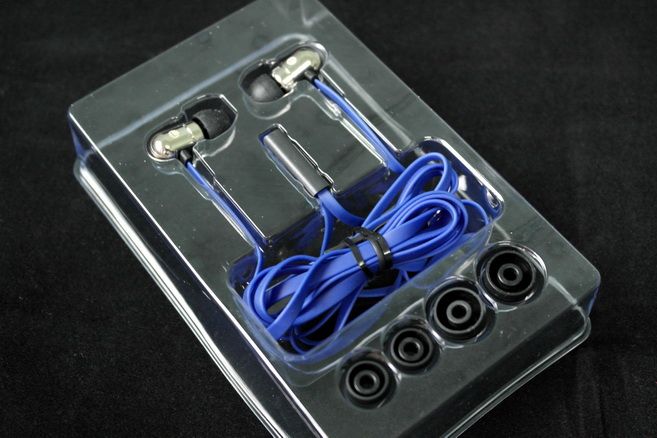
D-200
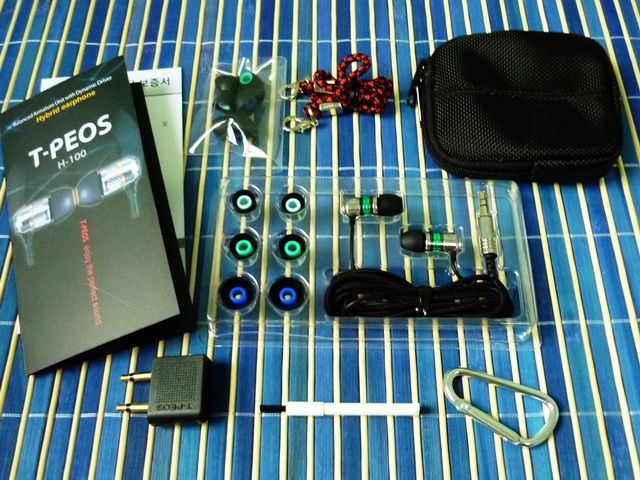
H-100
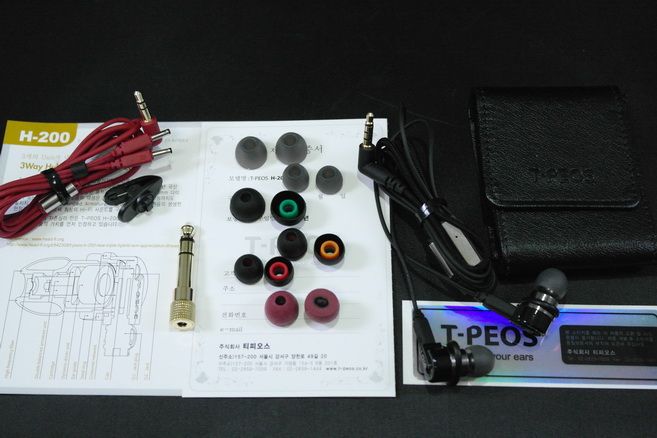
H-200
As the original flagship of the company, H-100 comes with a well-made wooden box, almost like a box of premium grade cigar. Inside, you will find a soft pouch with carabiner, cleaning tool, 2 pairs each of 4 different sized eartips, necklace that let you hang the earpieces around the neck, airplane adapter, and the manual (*current version might also has a pair of Comply like foam tips). The earpieces themselves are made out of stainless steel, which is slightly heavy on the hand but not enough to fall out from the ear. The cable has fabric sleeve from the Y-splitter down to improve durability. Overall, the build quality is quite good. The only place that can be improved is the mesh filter on the nozzle, which seems a little bit flimsy. Those on D-200 and H-200 look better for the job. This is just a minor issue and hopefully T-PEOS has improved on later batch.
As the latest and greatest of the company, H-200 comes in a heavy black paper box - not as showy as H-100’s wooden box, but still classy enough. Inside, there is a leather case, a 3.5mm-to-6.4mm adapter, 2 types of eartips with 3 pairs each in different sizes, a pair of foam tips, and 2 types of cables: a normal red cable and a black cable with single button mic and fabric sleeve from Y-splitter down. The H-200 has a removable cable design and the connector is the barrel / plug type, similar to that used on Sleek Audio, but larger and more robust. Though the connector is fairly large in size relative to the earpiece, the design itself is definitely very well. It won’t dislodge or rotate easily, and the connection is very firm. The earpieces themselves are a mix of brass and plastic. Like the rest of T-PEOS line-up, the construction is really good. However, I don’t know why they put in an oval shaped ‘ear guide’ that seem to do nothing. Though it doesn’t improve fitting, the good news is it doesn’t make the IEM less comfortable either.
All and all, there is nothing to fault on build quality. They are not the best ever, but still well worth the price and stand up to the competition.
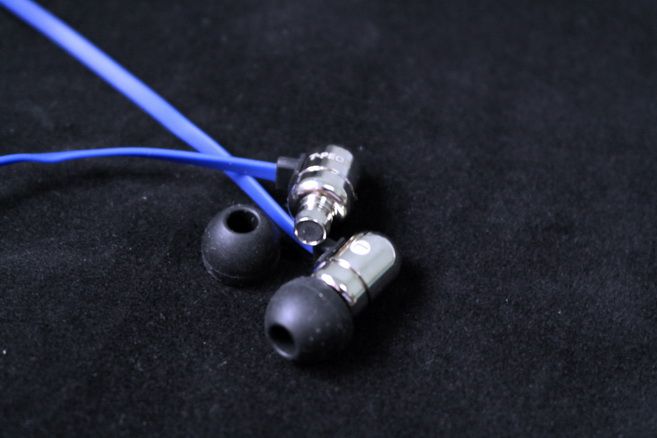

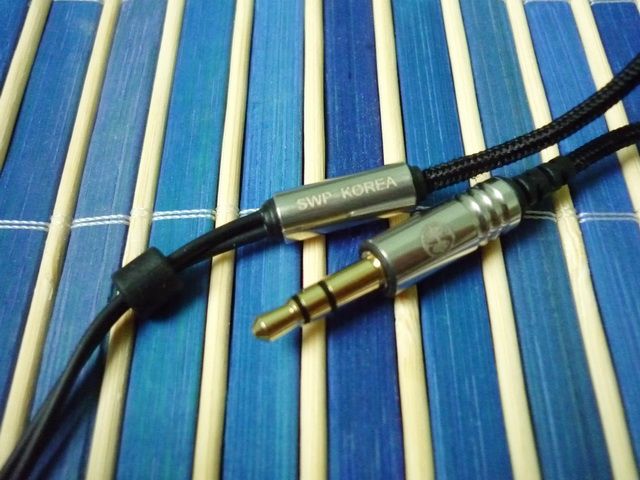
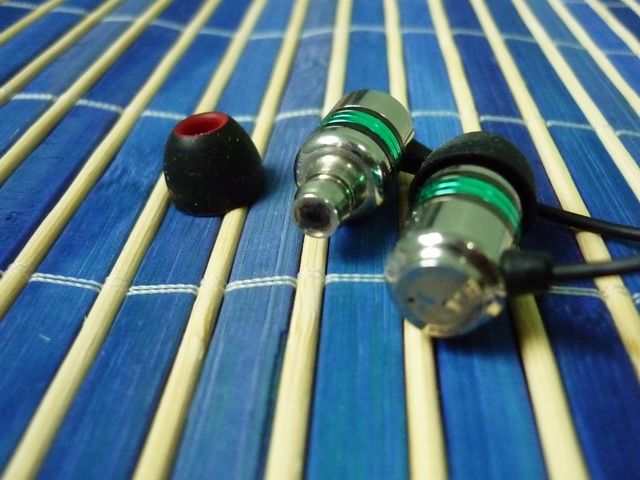
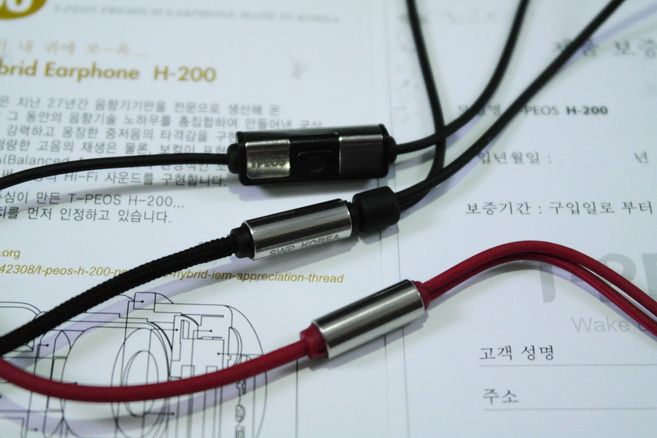
Two replacement cables for H-200: mic+remote (black) and normal (red)

Sound Quality
All three models have received no less than 50 hours of burn-in before the review.
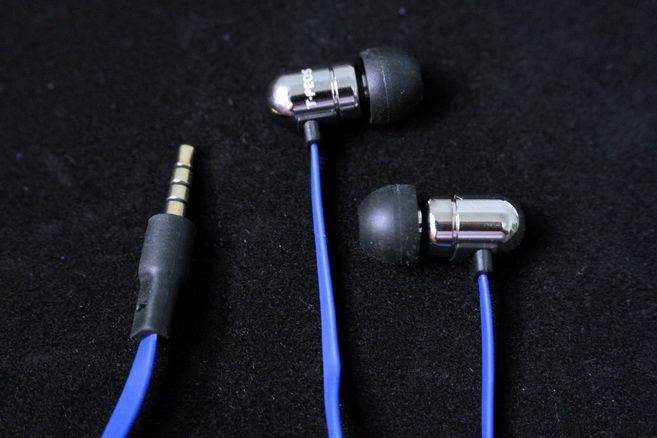
D-200 is warm, musical while still decently balanced. Bass reaches down to the 10Hz region with good extension and decent quantity. Not exactly bass heavy IEM however, it compliment the mid well enough. Mid is the strength of the IEM – rich, full, and well textured. Treble extends well, but in a smooth fashion. Not a lot of sparkle to speak of but enough not to sound veil. Analytical listener need not apply. However, it does have a single peak in the lower treble region that gives it a slight graininess on upper vocal, just outside of the usual sibilant area. Soundstage is above average, but submissive than open-ended. Overall, D-200 is best described as Brainwavz M2 upgrade, though only by a small step. They both share the same warm and relaxing presentation that is easy going and better for mainstream vocal, such as Pop, Rock, Folk, Country, etc., but probably not going to be the best for instrumental like Classical, String, etc. that require micro-detail to shine.
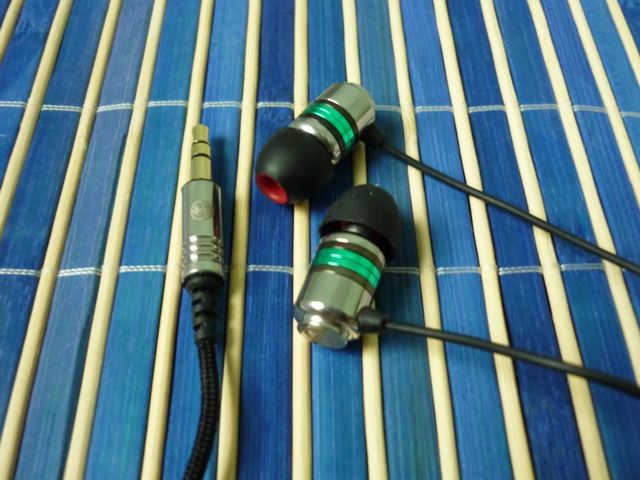
H-100 has a V-shaped sound that is analytically cold mixed with good bass kick and soundstage. Bass reaches down deep and is more abundance in the sub-bass region. Not nearly a bass monster but definitely above neutral. Mid is clean, if not a bit on the drier side of things. Treble is well extended, sparkly, crisp and slightly peaky on the upper vocal region, bright but not considered to be sibilant. Like most V-shaped sounding IEM, soundstage is fairly good, very open-ended but not as great in width and side-to-side positioning. All and all, H-100 is best described as Brainwavz B2 or EXS X20 with sub-bass boost. Beside the extra bass quantity, another obvious difference will be soundstage. As H-100 presentation is noticeably further away than B2 / X20, it gives a more laidback / airier feeling. Those who accustom to the aggressiveness of TWFK based dual drivers might not immediately get used to the same sound signature being pulled away from the front row seat, but there is more to gain that way in my opinion. Those who find H-100 too dry can give the 250Hz region a slight boost, which will help to add a little more texture and forwardness to the overall sound and makes vocal more appealing. But as it is, H-100 is great for those who are already bass boosting analytical IEM, and trying to find a balance between accuracy and enjoyability. A V-shaped sound is traditionally not the most popular of sound signature, and the more extreme H-100 is probably more so. But for those who do like a colder V-shaped sound, H-100 will be one of the top choices, filling some of the void left by the discontinued Triple.Fi 10.
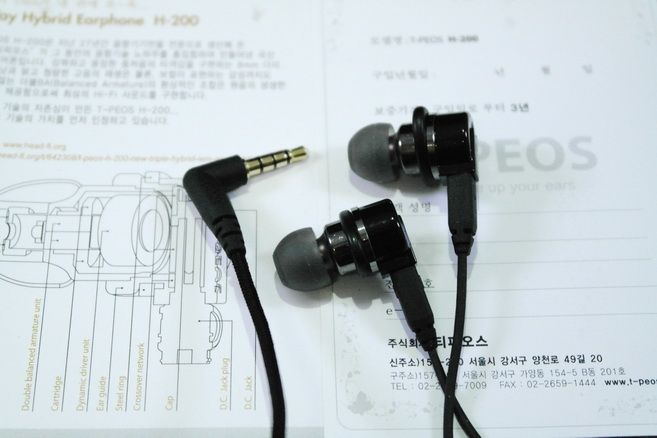
H-200 is well balanced and fairly neutral, yet rich and warm in tone. Bass reaches down deep with good rumble and impact, quick to response when called for even though it is closer to neutral in quantity than H-100. Mid is warm, full but not sweet, and almost a little bit dull, especially on the upper vocal range. Treble is well extended, decently sparkle and crisp, but not nearly as bright as H-100 though there is still a tiny bit of fainted grain over the lower treble region. It has enough micro-detail to keep everyone but hardcore analytical listener satisfied. Soundstage is above average, as the presentation is neither very upfront nor far away, like the third row of the theatre seats. If anything, it widens out well but lacks just a bit of height and depth to make it really good. Though nothing particular stands out on its own (nor fails miserably on the matter), H-200 has just about the right bass, mid and treble, coupled with a decent soundstage to compete with some of the best universal IEM around.
In Sum…
With only a few months into the IEM market, T-PEOS already brings us some heavy hitters – the unassuming D-200 series punches well above its price range, the love-it / hate-it H-100 series brings brightness and bass into one unique formula, and the hybrid triple driver H-200 gives a top-tier sound with a mid-tier price. I think it is fair to say, the Korean does know how to impress - and given their overall performance, it will be also fair to give them a recommendation of Sonic Diamond.
A thanks to T-PEOS as well as its authorized dealer, Mellow Works Studio for the samples.
Numeric rating can be found on The List






